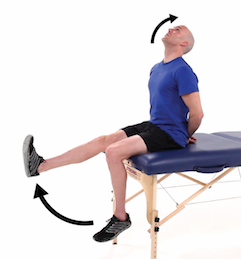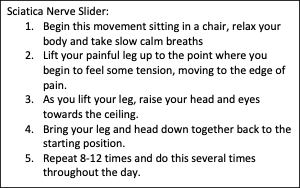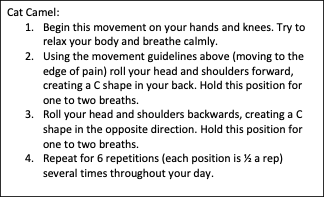
Taming your sciatica: movements that can help ease discomfort
In a previous article we discussed what may be contributing to your pain experience, how mindfulness can help, and the power of goal setting. It is time to go through some practical tips and movements to help you conquer sciatica.
In the world of rehabilitation, we often use the phrase “motion is lotion” meaning, frequent movement helps to combat barriers to engaging in activities that we enjoy.
Have you ever dreaded walking your dog because you know the activity will cause a flare, or felt unable to go for a walk with a friend or family member because that day was a bad pain day?
If you have, that’s totally normal and it is important to acknowledge your current position on this journey as your starting point. The information to come will help you get started on the path to moving with ease, unencumbered by limitations of your pain experience.
The goldilocks approach to movement
Movement is an integral component of a healthy lifestyle in general and it is even more important when dealing with persistent pain. Moving too little on one hand, does not give a potent benefit, and moving too much on the other hand, may leave you tired and sore later.
To facilitate sustainable gains in movement capacity, I suggest that you move to the edge of pain. This means that you should move until you feel yourself leaving that place of comfort and try to re-approach movements which aggravate your pain, breaking up the amount of time you spend doing those activities (pacing) or changing your posture while doing those activities.
Mild discomfort with movement is okay but I encourage you to move within your limits.
Moving at the edge of pain is challenging and takes practice. To help guide you, whenever doing any movement, be it the movements to come or daily activities, ask yourself three questions:
- Am I safe?
- Will I regret this later?
- Am I holding body tension?
Let these questions put you in the pilot seat. Try your best to monitor the pain you experience when moving – allowing yourself to explore a slight increased discomfort in the form of a stretch sensation or a muscular fatigue sensation while trying to stop before the point of feeling sharpness or radiating pain throughout your leg or back.
Answering these three questions will help you feel safer while moving, helping you move more confidently. The movements below are a great start to moving in a way that will combat the tightness and discomfort brought on by sciatica.
I encourage you to give these a try and see how they make you feel. It may take some time before you notice any changes so try to take note of how these movements feel on day one and reflect again at day 14.
Not all exercises may be right for you or your condition. If you are unsure if any of the following activities are safe for you please speak to your Lifemark therapist or healthcare provider before completing.




Breaking up sitting time
Aside from doing the movements laid out above, there is a growing body of evidence that suggests spending too much time sitting may be a contributor to persistent sciatica.
A great way to break up sitting time is to set a timer for 30 minutes whenever you sit down in a chair. When the timer goes off, either walk around for 5 minutes, stretch, or do some other forms of gentle movement. Repeat this process throughout your day, everyday.
Pacing
Moreover, chores such as doing the laundry, cleaning the floors, and vacuuming can be major irritants of sciatica. As mentioned above, frequent movement is very important but sometimes it is hard to scale that movement appropriately when trying to get things like chores done in a timely fashion.
While doing chores, take a break whenever you notice an increase in the intensity of your pain combined with an inability to release muscle tension, inability to calm or smooth out your breath, or when it no longer feels like you will be okay later.
Taking five minutes or so to practice calm breathing or release muscle tension may be the remedy your body needs to continue to work without paying for it later. This may delay the completion of your chores but over time you can work to do more without taking as many breaks, building endurance at a steady pace.
Sciatica can be very debilitating and cumbersome. If you are currently struggling, try to implement some of the strategies delineated in this series.
Staying committed to a program may be challenging but if you set goals and make the strategies discussed in this series part of your daily routine you may notice profound changes to your mind, body, and spirit.
If you feel you need further professional assistance, try contacting a physiotherapist or occupational therapist with Lifemark and they will help you get on the path to a pain free life.
Check our Locations page to find a clinic near you or book online to schedule an appointment with a clinician.
This blog was written by Sam Grossman - a Physiotherapy student at Queen's University.






